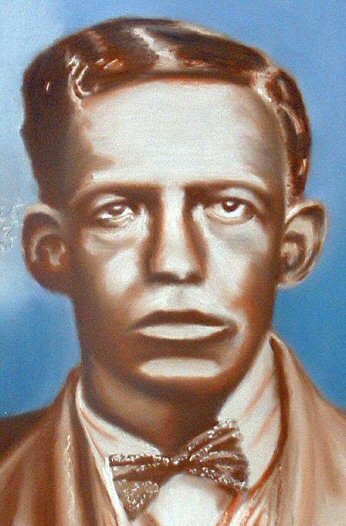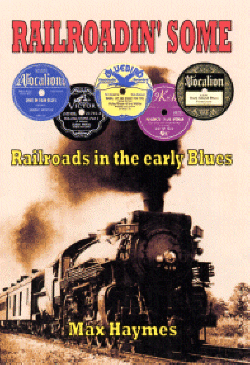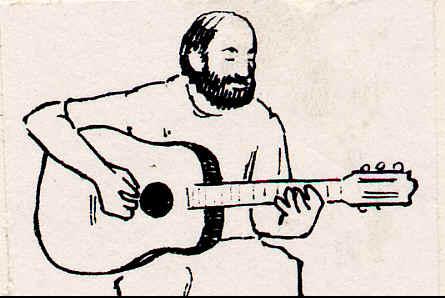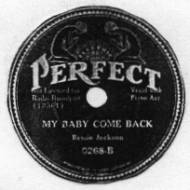
Painting © 2004 Loz
Arkle
Website
© Copyright 2000-2011 Alan White - All
Rights Reserved
Site optimised for Microsoft Internet Explorer



"Spotlight on
Lucille Bogan - Part 2"
by Max Haymes
The theme of making her own booze (see Pt.1), and her love of liquor generally, was a very prevalent one in Lucille Bogan’s recorded output. Very early on in her recording career and a month or so after cutting “Cravin’ Whiskey Blues (see Pt.1) she declared:
“I have
sold corn whiskey, done everything a woman could do,
I have sold corn whiskey, done everything a woman could do.
I’ve even robbed other men an’ give their money to you.”
She pleads with her man to treat her right - a man she has already left her husband for:
“Cryin’, don’t quit me
daddy, just try an’ get along,
Cryin’, don’t quit me daddy, let’s try an’ get along.
You took me from my husband, brought me ‘way from home.”
But the man’s love for her has grown cold and he becomes totally insensitive to her feelings and brings another woman into the home. Bogan reacts with the only solution open to her:
“I ain’t gonna be, I
ain’t gonna be your darky no more,
Cryin’, I ain’t goin’ to be your darky no more.
Treat me like a dog everywhere we go.” (1).
Behind Ms. Bogan’s rich vocals some fine barrelhouse blues piano can be heard; probably played by a Louisiana man, Will Ezell, probably from Shreveport.
Interestingly, one of the few acts we can glean from Sheldon Harris (2), is that after marrying Nazareth Bogan Lucille later married (presumably after a divorce) a James Spencer. This second marriage, if it ever took place, might well have been in the mid-1930s when Bogan left Chicago to return to Birmingham, Alabama (see Pt.1). In the meantime, Paramount talent scout, Harry Charles who was responsible for Bogan’s recording debut, alleged in later years that she had an affair with Will Ezell when the latter pianist was working with her in Birmingham. “He came down here to ‘practice’ the songs—that was his excuse”, Charles said.”(3).

Fig.1 A 1933 recording as “Bessie Jackson”.
When Bogan’s husband started
divorce proceedings she appealed to Charles for his support to prove her
fidelity, but Charles said “No, I’d be swearin’ lies! - I knew she was
runnin’ around with Ezell”.(4). This would have been c.1927 before Lucille
Bogan left for Chicago (see Pt.1). This was the same year that she recorded
“Doggone Wicked Blues” and “Cravin’ Whiskey Blues”. Will Ezell had
accompanied her on the last title and three others in a batch of six. Quite
possibly, it was Ezell who had “took me from my husband, brought me ‘way
from home” .
Another main theme featured by Bogan, as with many blues singers, was the railroad. But in her case there seems to be so much more involvement than a passing reference to a train. Some 15 months after her last record with Ezell, she teamed up with ace slide guitarman, Tampa Red and probably the innovative boogie pianist, Cow Cow Davenport. One of two titles she did at this session was “Pay Roll Blues” Back in her role as a prostitute, she wants to meet the payroll car on the Southern railroad:
“Pay day on the Southern,
pay day on the Yaller Dog,
Pay day on the Southern, pay day on the Yaller Dog.
An’ I want to meet that payroll an’ try to make a water-haul.”
“Mens out on the Southern
they make dollars by the stack,
Mens out on the Southern they make dollars by the stack.
An’ I have money in my stocking when that payroll train gets back.”
“I ‘m leavin’ here
broke an’ ain’t got no money at all,
I ‘m goin’ to leave here broke ain’t got no money at all.
But I will bet my life I will make a water-haul.”
“I will be steady—rollin’,
rollin from sun to sun,
I will be steady—rollin’, rollin from sun to sun.
An’ I will have a-plenty money when that fo’ day rollin’ done”.
“You hear me, baby,
money’ s what I’ve got to have,
You hear me, baby, money’s what I’ve got to have.
I’ve got to get me fifty dollars, if I have to make a midnight grab.” (5)

The payroll train (often a single car - i.e. coach) was a phenomenon of railroads in the earlier part of this century and travelled many miles, stopping at various points so that workers could make their way to it and pick up their wages. As the money could be for a month’s work (or more!), the payroll train was often almost literally stuffed with banknotes! Although “steady-rollin” can refer to a regular job, as in Robert Johnson’s “I’m A steady Rollin’ Man”, here the reference to “fo’ (before) day rollin” leaves little doubt that Bogan’s “sun-to-sun” period starts at sundown and finishes at the break of day. Also use of the phrase “water-haul” where “water” refers to semen rather than Adam’s ale! As the famous bluesologist Paul Oliver said: ‘...clear water being in itself a sexual metaphor” (6). In the last verse the singer seems desperate enough to mug one of her ‘clients’.
Bogan imparts more than a casual knowledge of railroads in this blues. The Southern covered much of Alabama and shared the I. C. (Illinois Central) tracks from Birmingham, Alabama to Jackson, Tennessee. The “Yaller Dog” refers to the Yazoo & Mississippi Valley R.R. which was not far from Bogan’s birthplace in Amory, Mississippi (see Pt.1). She would seem to have been involved with a railroad man (James Spencer?) on another line, the M.& O. this time:
“When he was leavin’, I
couldn’t hear nothin’ but that whistle blow,
When he was leavin’, I couldn’t hear nothin’ but that whistle blow.
An’ the man at the throttle, Lord, he wasn’t comin’ back no
more.”
“He had his head in the
winder, he was watchin’ those drivers roll,
He had his head in the winder, and he was watchin’ those drivers roll.
‘Say, I’m goin’ away, baby, an doggone your bad luck soul.”
Since it was virtually unknown, at the time (1934) for a black railroad employee to reach the position of engineer (engine driver) due to strong racist attitudes from the dominant white rail unions, it seems likely that Ms. Bogan’s man was a fireman. Certainly, the latter should be the only one in the cab watching “those drivers roll”! (large driving wheels on the locomotive-see fig .2). Lucille Bogan delivers one of her most powerful vocals on this blues. The moving poetry of her words cannot fail to strike you. The concept of the cab window filled in by her lover’s figure when he is actually sticking his head out to watch the train wheels roll. Also the different levels of meaning in the phrase “I couldn’t hear nothin’ but that whistle blow,”. Obviously she would be standing next to the front of the train for the last glimpses of her man. But in her upset emotional state she might as well be at the other end of the platform, as that whistle blowing is her lover’s final farewell. She ends this blues with these emotion-torn lines:
"I was sorry, I was so sorry to my heart,
I was sorry, I was sorry to my heart.
To see that M.& O. train an’ me an’ my daddy part.”(7).
Although the M.& O.(Mobile & Ohio) didn’t run to Birmingham at this time, the railroad also shared the I.C. tracks that did; as too, did the St. Louis-San Francisco (the Frisco).

A year earlier to a wicked slow piano boogie figured, Bogan admits that indeed he is “a railroad man”:
“He’s a railroad man an’ he sure do love to
ride,
He’s a railroad man, sure do love to ride.
If he don’t ride that T.&N.O. he sure aint satisfied.” (8).
"The T.&N.O. was the Texas & New Orleans RR.a southern part of of the Southern Pacific which served Texas and important cities in the South including New Orleans. it was also a pioneering logging road in the East Texas piney woods. (see Chapters 1 & 2. Railroadin' Some. Max Haymes. Music Mentor Books. 2006).
The Frisco is a railroad featured in many blues and was part of a large network of lines which never got within 1000 miles of San Francisco but connected Chicago to the Gulf of Mexico and many points on the eastern seaboard including Birmingham, Alabama. Recorded in the same period, “Forty Two Hundred Blues” paints an even more detailed picture. The title referring to the number on the side of the steam locomotive running on the Frisco line:

Fig.2 Mallet loco of the B.& O. Similar but only 12 drivers long. c.1930.
1.”Did you hear, did you hear, did you hear
that Frisco whistle blow?
Did you hear, did you hear, did you hear, hear that Frisco whistle blow?
And she blowed just like, she ain’t never blowed before.”
2. “I was standing at the station when that
4200 left town,
I was standing at the station when that 4200 left town.
Burnin’ down in oil, and that train was Kansas City bound.”
3. “I never felt so sorry, till the fireman
ring the bell,
I never felt so sorry, till the fireman ring the bell.
Put his head in the winder, said ‘fare thee, f are thee well “.
4.”That 4200 is sixteen drivers long,
That 4200 is sixteen drivers long.
Lord, and the man I love, is on the train and gone.” (10).

Walter Roland supplying a good imitation of a train whistle at the end of the opening lines in the first verse while playing skilful piano runs which weave in and around Bogan ‘s raw-edged vocals, where she confirms the suspicion that her lover/husband was a fireman. In the second verse there is a reference to oil-burning locomotives which were replacing coal-burners on some roads; ‘being seen as more economical as well as safer. The fourth verse refers to the wheel formation of the engine.
This sort of detail in her blues indicates a more than average interest/knowledge in railroads and the lines of the last three blues quoted more than suggest that, we the listeners are getting a glimpse of the evolution of a particular blues, which was surely an actual and traumatic incident in the life of Lucille Bogan.
References
1.”Doggone Wicked Blues” Lucille Bogan vo.; prob. Will Ezell pno.
c.July,1927. Chicago.
2.”Blues Who’s Who”. Sheldon Harris.
Da Capo. N.Y. I989 (Reprint).
3.”Paramount-Part 4”. Stephen Calt & Gayle Dean Wardlow. From “78
Quarterly” Vol.1 No.6. 1991.
4.Ibid.
5.”Pay Roll Blues” Lucille Bogan vo. Tampa Red gtr.; prob. Cow Cow Davenport
pno. 8/10/28. Chicago.
6.” Screening The Blues”. Paul Oliver
Cassell. London. 1968.
7. “I Hate That Train Called The M.&O” Lucille Bogan, as “Bessie
Jackson”, vo.; prob. Bob Campbell gtr.; Walter Roland gtr. 31/7/34. N.Y.C.
8 . “T .&N.
O. Blues” Lucille Bogan, as “Bessie Jackson”, vo.; Walter Roland pno.
17/7/33. N.Y.C.
9.Actually the Alabama, New Orleans, Texas & Pacific Junction Railway, which
was taken over by the Southern in 1916. From “History of Mississippi – The
Heart of the South – Vol II”. Rowland Dunbar. The S. J. Publishing Co.
Chicago & Jackson, Mississippi. 1925.
10 “Forty-Two Hundred Blues” Lucille Bogan, as “Bessie Jackson”, vo.;
Walter Roland pno., vo. Effects. 18/7/33. NYC.
Copyright © 2001 Max Haymes.
All rights reserved.




